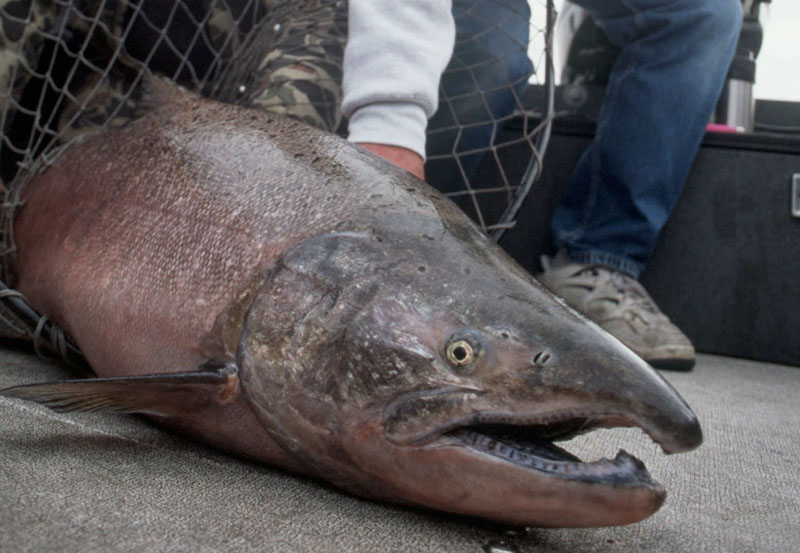The fall chinook that return to the free-flowing Hanford Reach of the Columbia River are renown for including a few gargantuan survivors in the 50- to 60-pound range.
Some anglers say they’re seeing fewer of the giant fish being caught in the Vernita area and they wonder if the trophies are being targeted by downstream commercial gillnet fisheries.
Ron Roler, Washington Department of Fish and Wildlife Columbia River policy coordinator, said it’s largely a matter of percentages.
“In reality, yes, nets will be somewhat selective toward larger fish, but when the run is this big, that will make virtually no difference,” he said, referring to the record 1.1 million fall chinook predicted to enter the Columbia River system this season.
“Look at commercial fishery openings and then look and Bonneville Dam counts. If there was a dip, it was imperceptible. They’re catching a tiny fraction of what’s going by.”
The answer, he said, is in the age composition of the returning salmon.
Each year’s run of chinook from the ocean to freshwater includes ages ranging from 2 (jacks) to the rare 7-year-old monster.
“The big fish anglers occasionally catch are the 5- to 6-year-olds,” Roller said.
This year’s record run is dominated by 3- and 4 year-olds, weighing roughly 8-18 pounds, the product of two consecutive years of exceptional spring flows that boosted salmon smolts downstream through reservoirs to the ocean.
“The survival rate for young fish during those outmigrations was off the charts,” Roler said, noting that last year’s component of 3-year-olds was big.
However, the older fish age classes date back to years of smaller returns.
The 2012 fall chinook returns of upriver brights (bound for the Columbia and tributaries above Bonneville Dam) to the mouth of the Columbia totaled 298,100 fish (less than a third of this year’s run) in the following age groups:
o Age 3-162,900; age 4-84,800; age 5-50,300; age 6-1,000.
The numbers for the 2011 returns, totaling 322,100 adult chinooks, indicate how a subtle shift in the returns of 6-year-old salmon can give anglers three times better odds of catching a 50-pounder:
o Age 3-93,100; age 4-195,400; age 5-50,300; age 6-3,000.
When an age group comprises less than 1 percent of a run, the odds are slim that you’ll see one caught, Roler said.
“This year’s record run is powered by 3- and 4 year-olds, and that means every time you drop a hook, you’re most likely going to catch one of those fish.”
If this year shines for meat fishermen, the future is bright for trophy angling.
“Next year there will be a larger percentage of bigger fish, with the main power coming from 4- and 5 year-olds,” Roler said. “And in 2015, there should be plenty of big fish.”
The 2005 season, he noted, was an odds-on year for catching 50-pound kings in the Hanford Reach with 7,300 of the 6-year-olds in the mix. That’s seven times more of the monsters than in last year’s run.
“In 2015, I expect the number of sixes to be even higher,” Roler said.



